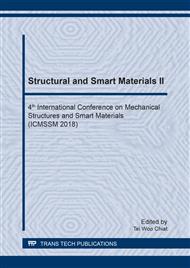p.8
p.14
p.20
p.26
p.34
p.43
p.48
p.53
p.58
Influence of Fillet Radius of Die End on Workability of Diameter-Enlarged Process
Abstract:
This study focus on the diameter-enlarged ratio, which is an important parameter for evaluating the workability of a partial diameter-enlarged process. Moreover, the study attempts to explain the influence of the fillet radius of the die end on the fatigue characteristic of the test piece after forming and the limit of the diameter-enlarged ratio without fatigue damage in the forming process. Three types of dies with different fillet deformations were used, and tensile tests were carried out after the processing was performed on three types of carbon steel. The fatigue properties of the test specimens after forming and the limit of the diameter-enlarged ratio at which no fatigue damage occurred were investigated. The results obtained are as follows: increasing the fillet radius of the die helped to ease the stress concentration at the root of the diameter-enlarged part, and shaft diameter-enlarged processing could be done without fatigue damage. Using a die having a radius equal to or larger than the appropriate fillet radius helped to increase fatigue strength, without causing fatigue damage, even if the diameter-enlarged ratio increased; notch sensitivity increased with an increase in the diameter-enlarged ratio, but the apparent notch sensitivity coefficient decreased with an increase in fillet radius in all the test pieces. A large limit for the diameter-enlarged ratio without fatigue damage may be obtained by using a die with an appropriate fillet radius.
Info:
Periodical:
Pages:
34-42
Citation:
Online since:
January 2019
Authors:
Price:
Сopyright:
© 2019 Trans Tech Publications Ltd. All Rights Reserved
Share:
Citation:


